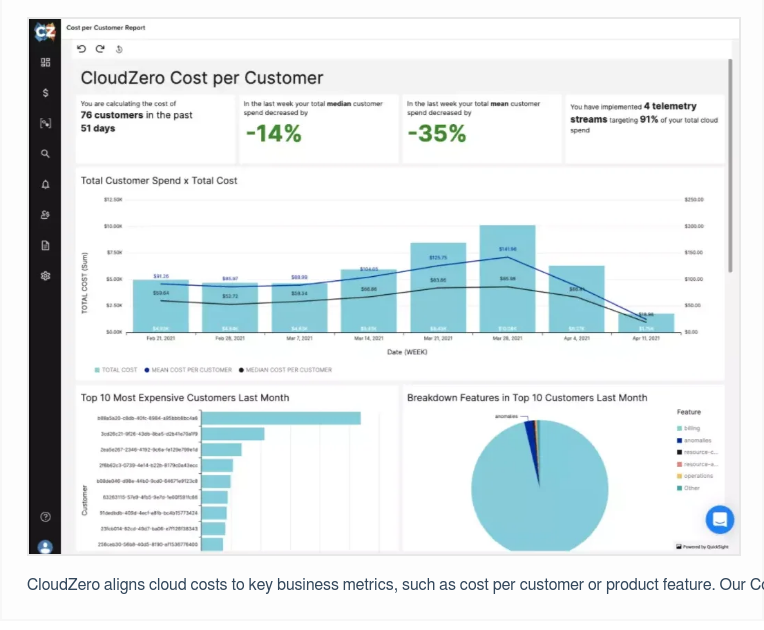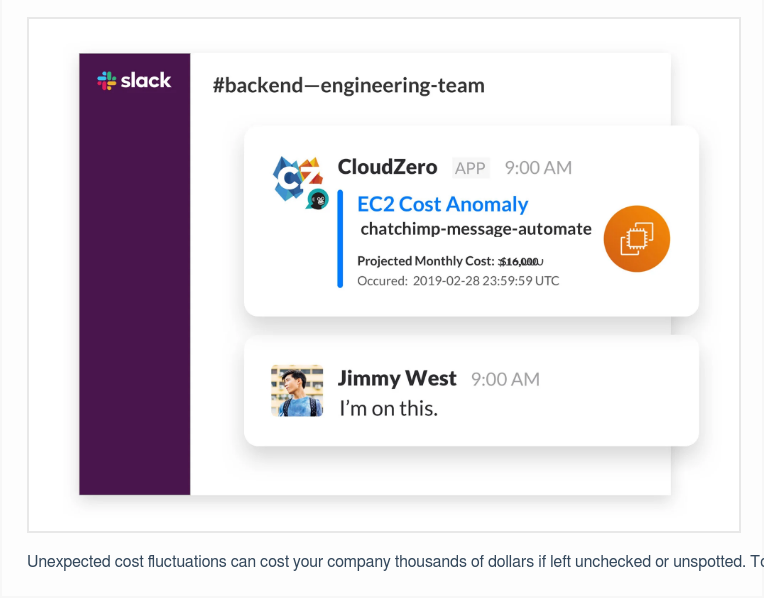For many organizations, cloud costs are a mystery.
Beyond knowing their total cloud spend, businesses have little insight into the biggest drivers of their costs, let alone how they can better manage their cloud investment. With on-premise infrastructure, organizations have a predictable understanding of their costs, but the same cannot be said for the cloud.
In this article, we’ll discuss why cloud cost optimization is important, the largest contributors to cloud spend, and strategies for reducing your cloud costs. We’ll also look at how software can help you better manage costs, and the features your cost optimization software should have.
Table Of Contents
Why Cloud Cost Optimization Is Important For Your Business
Cloud cost optimization isn’t just about saving money; it’s about getting the biggest ROI on your cloud investment.
“One of the most important aspects of cloud cost optimization is that it allows your business to function just as efficiently as you need it to,” says Ronald Sampson, a research analyst at CreditDonkey, a review and comparison website that publishes data-driven analyses to help people save money.
Having proper visibility into cloud spend enables organizations to understand what they are spending and how much value they’re getting back.
Regardless of the size of your business, cost optimization can help you increase margins without having to alter your overall strategy. The business can meet its goals while making its cloud resources go further than before.
Sampson points to an additional reason why organizations should focus on cloud cost optimization: clear cost visibility.
With cost visibility, organizations can gain full insight into their cloud spend. This increase in visibility provides organizations with the data they need to make informed engineering, product, and business decisions that ensure profitability for their company.
The Largest Contributors To High Cloud Costs
Figuring out what is causing your high cloud costs can be tricky, as the answer will not be the same for any two organizations.
Sampson notes that “each organization has different requirements around applications, infrastructure, data protection, and so on.” However, there are certain factors to be aware of when determining the cause of your high cloud spend:
- Storage costs – Sampson says this is one of the largest costs for cloud providers, who then pass those costs on to you. A large amount of storage is backed up regularly and stored in a third-party location.
- Bandwidth – Transferring large files or videos can increase your cloud costs significantly.
- Usage – Understanding your costs and how they relate to usage is key. Even if your organization considers cost optimization a task for the future, setting up an hourly cost and usage report can provide you with some much-needed insight. (Check out this ebook for detailed instructions on how to set this up, as well as more info on cost optimization with AWS.)
The cost of success
In addition to looking at your cloud spend through this more traditional lens that focuses on tangible aspects, it’s also vital to consider another overarching factor that results in high cloud costs: success.
“When your business is growing, you have more people on your platform and require more resources,” says Erik Peterson, CTO and Co-Founder of CloudZero. “Naturally, this causes your costs to increase.”
In order to prepare your business for success, you need to have visibility into your costs and how they relate to your success metrics. Understanding metrics such as unit cost, cost per feature, cost per product, cost per customer, and how they are all related to growth drivers helps your business plan for future success.
If you don’t know how much you add in costs for every new customer, you can’t effectively optimize costs, Erik explains.
When you optimize for the things that drive your growth — for example each new customer acquisition — you can work more effectively with your engineering team to find ways to optimize your products and your cloud usage to reduce each customer acquisition cost by a certain amount.
3 Tips For Reducing Your Cloud Cost Spend
Once organizations have a clear idea of their costs, they can work on cost reduction strategies. With cloud cost optimization, however, it’s not just about getting the lowest dollar amount, but also about getting the highest value for your business.
1. Ask for what you want
Sampson notes that as a first priority, it’s important to negotiate with your cloud provider to get what you want. If you don’t ask for the price, features, and services your organization needs, it’s likely you won’t receive it.
He also suggests setting clear expectations and guidelines with your team for their usage of your cloud resources. Be sure to be transparent with each team about their usage and relative costs so they are able to plan accordingly.
2. Factor in the potential for failure
Similar to how success drives costs, failure can do the same thing.
“Many organizations only think about how they can scale up, but being able to scale down is just as important when it comes to cloud cost optimization,” says Erik.
If there is another recession, pandemic, or other event that significantly affects your customers, you need to be able to scale down your operations quickly. If you can’t, you will be saddled with a huge cloud bill.
It’s important to measure your systems by how elastic and dynamic they are based on customer demand. A successful organization must be prepared for failure as well as success.
3. Respond to issues as quickly as possible
In many engineering departments, the old adage “move fast and break things” is king, notes Erik.
However, keep in mind that breaking things always comes with a cost. It’s vital to detect when something is broken as quickly as possible. Erik says, “It’s much easier to swallow a $1,000 mistake than a $100,000 one.”
Optimize Cloud Costs With The Right Software
Cloud cost management isn’t something an organization can take on manually. It is a complex process that requires monitoring multiple data points.
To make the most of your time and strategy, use the right tools for the job.
While there are several excellent software options available that will provide organizations with the recommendations they need for rightsizing their cloud environment, we suggest looking for cloud cost optimization software that go beyond the traditional offerings with these best-of-breed features:
- Metrics in context – The right cloud cost optimization platform should be able to connect engineering decisions with business outcomes. At CloudZero, our primary focus is helping engineers understand the cost of their actions. This way, they can see breaking something as an opportunity to learn.
- Cloud cost telemetry – A core capability of your cloud cost optimization software should be combining application metrics with cost data so you can understand your unit cost, cost per customer, and cost per feature, as well as what happens to your costs as your customer base grows or shrinks.
- Rapid and early anomaly detection – Going beyond just performance monitoring, this software needs to have speed as a key feature. If your developers start logging more data, this comes at a great cost. If they forget to turn off data logging, they will generate thousands in additional costs per day. To manage this kind of activity, this platform needs to be able to keep up with the changes in your organization and detect anomalies right away. “If you wait days to be notified — like you would with traditional cloud optimization solutions — you will already have spent more than you intended,” warns Erik.
- Output direction – There are many teams involved in cloud cost optimization — engineers, finance, executives, and more. The software you use needs to be able to direct notifications to the people who can take action. With CloudZero, you can see your cloud spend in metrics that matter most to the different teams in your organization — and use that cost intelligence to make informed product, engineering, and business decisions.
Want To Know The Value Of Your Cloud Spend – Not Just The Cost?
Cloud cost optimization ensures your organization has the resources you need while staying within your budget. However, it’s not just about cost, it’s also about the value of your cloud spend.
Organizations that use the cloud successfully don’t just stop at cloud cost optimization. They go a step further to employ cloud cost intelligence — the what, why, and where insights that surround their use of the cloud.
CloudZero is the only cloud cost intelligence provider that lets you see your costs from any angle, so you can connect your products to your cloud spend.
Engineering can self-serve and explore the cost of their architecture and apps (and see exactly what’s driving their costs and why) and finance can measure the ROI of your technical investments. Controlling costs should be everyone’s responsibility, and CloudZero gets your entire organization on the same page.
Want to talk about how we can support your organization on its journey to analyzing cloud costs?  .
.











